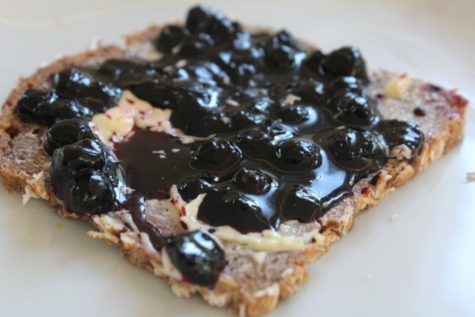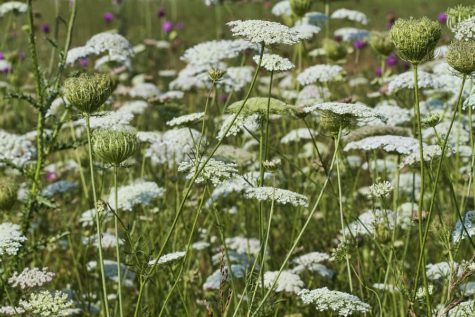Jams and Jellies
Simple Mulberry Jam
Here is a really simple recipe for Mulberry Jam.
Wash the mulberries and keep them in a bowl. Add lemon juice to the bowl and mix.
Now put the mixture over medium flame in a pan for about 12-15 minutes. Add the sugar into mulberries and stir well. Cook it till the mixture becomes thick and consistent.
Remove from heat and cool down the mixture. Once done, transfer into jar and refrigerate.
From: Times of India
Old Fashioned Mulberry Jam
Here is a very old recipe for Mulberry Jam, as give in A Modern Herbal by M Grieve:
- Note: Unless very ripe Mulberries are used, the jam will have an acid taste.
Put 1 pound of Mulberries in a jar and stand it in a pan of water on the fire until the juice is extracted. Strain them, and put the juice into a preserving pan with 3 pounds of sugar.
Boil it and remove the scum.
Put in 3 pounds of very ripe Mulberries and let them stand in the syrup until thoroughly warm. Then set the pan back on the fire and boil them very gently for a short time, stirring all the time and taking care not to break the fruit.
Then take the pan off and let them stand in the syrup all night. Put the pan on the fire again in the morning and boil again gently until stiff.
Lilac Jelly
- 2 c. packed lilac flowers
- 2 1/2 c. boiling water
Pour the boiling water over the lilac flowers, cover and allow to cool. Allow the infusion to sit 8 hours, or overnight. Strain the flowers from the liquid using a coffee filter, you should have about 2 1/4 c. liquid. This is your Lilac infusion.
- 2 c. lilac infusion
- 4 T lemon juice
- 1 box Sure-Jell powdered pectin
- 4 c. sugar
Place the lilac infusion, lemon juice and pectin in a large pot. Stirring constantly, bring the mixture to a rolling boil. Add all of the sugar at once, and stir to dissolve. Bring the jelly back up to a rolling boil for 1 minute.
Remove the jelly from the heat, skim the foam from the top (I got a lot of foam from this recipe) and ladle into hot, sterilized jars. Process in a water bath for 10 minutes. Makes 8- 4 oz jars.
From: The Three Foragers
How To Make Molasses

Take pumpkins, boil them, press the juice out of them, and boil the juice to a proper consistence. There is nothing else necessary. The author of this book, John George Hohman has tasted this molasses, thinking it was the genuine kind, until the people of the house told him what it was.
Queen Anne’s Lace Jelly
- 18 large Queen Anne’s lace heads
- 4 Cups water
- ¼ Cup lemon juice (fresh or bottled)
- 1 Package powdered pectin
- 3 ½ Cups + 2 Tbsp. sugar
Bring water to boil. Remove from heat. Add flower heads (push them down into the water). Cover and steep 30 minutes. Strain.
Measure 3 cups of liquid into a 4 – 6 quart pan. Add lemon juice and pectin. Bring to a rolling boil stirring constantly. Add sugar and stir constantly. Cook and stir until mixture comes to a rolling boil. Boil one minute longer, and then remove from heat.
Add color (pink) if desired. Skim. Pour into jars leaving ¼” head space. Then process in a hot water bath for 5 minutes.
Makes about 6 jars
Important Notice:
Historically, Queen Anne’s lace was used for medicinal and contraceptive purposes. Avoid it if you are pregnant, and check with your doctor if you are currently taking medications. More information about this wild herb can be found here: Encyclopedia of Herbology – Wild Carrot
The carrot family contains a number of poisonous look-alikes, most notably poison hemlock. Once the fruit has formed, it is easy to tell them apart, but less so when the plants still only have leaves.
When foraging, always choose high-quality landscapes (not next to the highway or on post-industrial or sprayed sites), and make sure to obtain permission if it is not your own yard. If possible, go out with an experienced forager.
Found at: Herbal Riot
Bilberry Jam

Bilberry is used for improving eyesight, including night vision. In fact, during World War II, British pilots in the Royal Air Force ate bilberry jam to improve their night vision. Bilberry is also used for treating eye conditions such as cataracts and disorders of the retina. There is some evidence that bilberry may help retinal disorders.
Here’s a recipe:
Put 3 lb. of clean, fresh fruit in a preserving pan with 1 1/2 lb. of sugar and about 1 cupful of water and bring to the boil. Then boil rapidly for 40 minutes. Apple juice made from windfalls and peelings, instead of the water, improves this jam. To make apple juice, cover the apples with water, stew down, and strain the juice through thick muslin. Blackberries may also be added to this mixture.
If the jam is to be kept long it must be bottled hot in screw-top jars, or, if tied down in the ordinary way, more sugar must be added.
From: A Modern Herbal
Oregon Grape Lavender Jelly
Our modern palate oscillates between the addictive flavors of salty and sweet, but we have lost an essential ingredient to optimal health: bitter plants. They are so rare in our diet that many people cannot name anything with bitterness except coffee. Historically, humans valued bitters for their digestive stimulating and medicinal properties. Oregon grape is a quintessential bitter plant that has the capacity to cleanse, clarify and enliven body and spirit.
Here’s a simple step by step recipe for Oregon Grape Lavender Jelly (Low sugar):
Measure 8 cups of clean, rinsed Oregon grape berries. Place berries in a cooking pot with 2 cups of water. Bring to a boil, turn down and simmer for 15 minutes. Use a large spoon to mash the berries against the side of the pot so the juice is released.
 Place a Foley food mill over another cooking pot. In 1 to 2 cup increments, turn the berries and juice through the food mill so that the seeds are separated. Remove the seeds from the mill before straining another batch.
Place a Foley food mill over another cooking pot. In 1 to 2 cup increments, turn the berries and juice through the food mill so that the seeds are separated. Remove the seeds from the mill before straining another batch.
Measure 4 cups of the juice/pulp. Place the juice in a cooking pot. Stir in 2 teaspoon of calcium water (included in Pomona’s Pectin, and 2 tablespoons of fresh or dried lavender.
In a separate bowl, measure 2 cups of honey and stir in 2 teaspoons of pectin.
Bring the juice in the cooking pot to a boil. Add the honey/pectin and stir vigorously for 1-2 minutes until the mixture returns to a boil. Remove from heat.
Place the jelly in clean hot canning jars, wipe the top of the jars to remove any spillage, cover with lids, and can in a water bath for 10 minutes. If any lids do not seal, refrigerate the jar of jelly and use within three weeks.
Oregon Grape Jam
Oregon grape was often used by several native North American Indian tribes. The blue fruits are tart and improve after frost. They are often gathered for jelly or wine. Used to treat a wide variety of ailments, Oregon Grape species contain the extremely potent alkaloid, berberine, (also found in goldenseal) which is antiseptic and stimulates the liver and spleen.
Ingredients:
- 1 quart Oregon Grapes (Mahonia aquifolia or other Mahonias)
- 3 apples, peeled, cored and cut into small pieces
- 1 box fruit pectin
- 7 1/2 cups sugar
- 1 – 12 oz can frozen concord grape juice concentrate
- Enough water ready to add to grape, apple pulps and juice concentrate to make the measurement of 6 cups.
- 8 – 8oz jars, lids and rims
Take out about 1/4 cup grapes and a heaping tablespoon of small apple pieces and set aside. Then follow the cooking steps for grape jam inside the pectin package adding the set-aside fruits to the jars just before sealing. If you don’t have enough wild Oregon Grapes at one time, you can freeze them until you have enough.
This recipe is from a woman in Coquille, Oregon, which is along the southern Oregon Coast. Her name is Rachel Ordway Smith. She has other recipes using fruits from northwest native plants on her web site at Arts Desire
Fresh Peppermint Jam
Fresh Peppermint Jam:
- 250 g of peppermint leaves
- 1 kg of sugar
- 2 lemons
- 0.5 liters of water
Wash mint leaves with stems, dry slightly and chop. Cut lemons into small pieces with the skin. Put everything into the pot and boil for 10 minutes. Leave for a day. Filter the infusion, add the sugar and cook until tender. Pour hot boiled jam into jars and close tight.
From: Herbal Picnic









